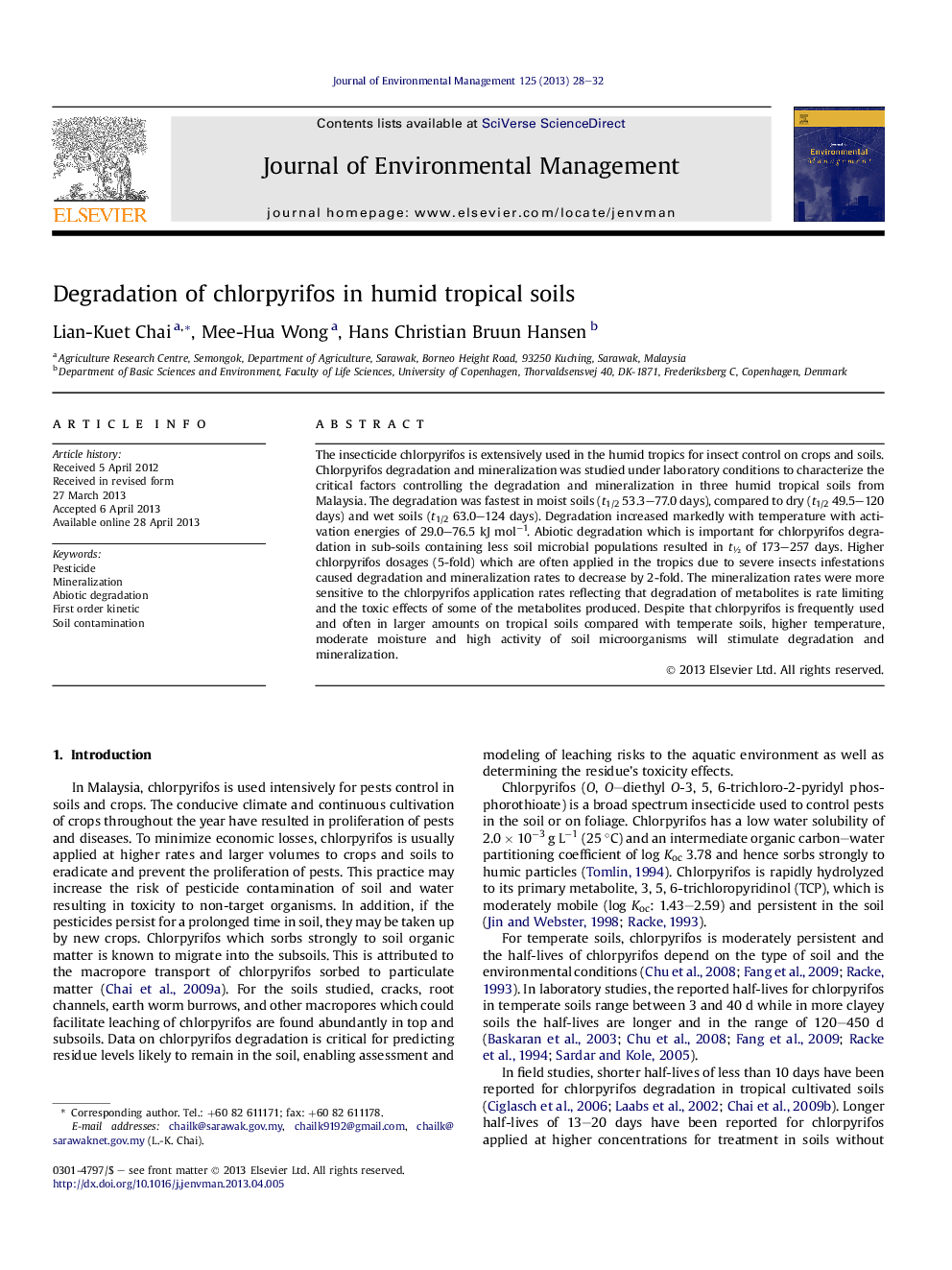| Article ID | Journal | Published Year | Pages | File Type |
|---|---|---|---|---|
| 1055884 | Journal of Environmental Management | 2013 | 5 Pages |
•Chlorpyrifos degraded fastest at higher temperature but slower in wet soil.•Abiotic conditions resulted in 3-fold decrease in degradation rates.•Degradation and mineralization rates decreased by 2-fold at higher concentration.•Mineralization rates were more sensitive to chlorpyrifos application rates.
The insecticide chlorpyrifos is extensively used in the humid tropics for insect control on crops and soils. Chlorpyrifos degradation and mineralization was studied under laboratory conditions to characterize the critical factors controlling the degradation and mineralization in three humid tropical soils from Malaysia. The degradation was fastest in moist soils (t1/2 53.3–77.0 days), compared to dry (t1/2 49.5–120 days) and wet soils (t1/2 63.0–124 days). Degradation increased markedly with temperature with activation energies of 29.0–76.5 kJ mol−1. Abiotic degradation which is important for chlorpyrifos degradation in sub-soils containing less soil microbial populations resulted in t½ of 173–257 days. Higher chlorpyrifos dosages (5-fold) which are often applied in the tropics due to severe insects infestations caused degradation and mineralization rates to decrease by 2-fold. The mineralization rates were more sensitive to the chlorpyrifos application rates reflecting that degradation of metabolites is rate limiting and the toxic effects of some of the metabolites produced. Despite that chlorpyrifos is frequently used and often in larger amounts on tropical soils compared with temperate soils, higher temperature, moderate moisture and high activity of soil microorganisms will stimulate degradation and mineralization.
